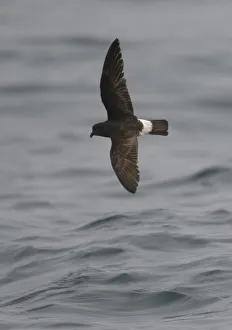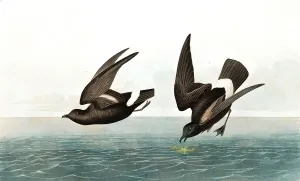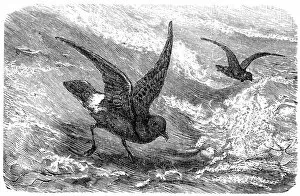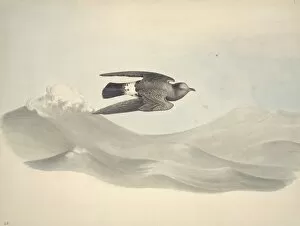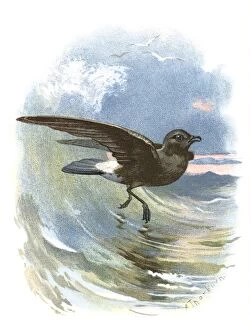Hydrobates Pelagicus Collection
The Hydrobates pelagicus, also known as the European storm-petrel or Least Stormy Petrel
All Professionally Made to Order for Quick Shipping
The Hydrobates pelagicus, also known as the European storm-petrel or Least Stormy Petrel, is a fascinating bird species that can be found in various locations across Europe. This small seabird is scientifically classified under Thalassidroma Pelagica and has been documented extensively in historical works such as "The Birds of America" by John James Audubon. One notable sighting of the European storm-petrel was captured over the Irish Sea off the Pembrokeshire coast. In this breathtaking image, the bird is seen gracefully soaring through the air, showcasing its impressive flight capabilities. Another remarkable encounter took place on an Iron Age Broch Mousa RSPB Reserve in Shetland, where a Storm Petrel Hydrobates pelagicus was spotted resting on the side of a wall. Throughout history, these enchanting birds have captivated artists and naturalists alike. Engravings by renowned ornithologist John Gould depict their delicate features and distinctive appearance. These depictions serve as valuable records for researchers studying avian biodiversity. Storm petrels are often observed at sea during their migratory journeys. Their presence amidst turbulent waters adds to their mystique and resilience. The European Storm Petrel's ability to navigate vast distances highlights its adaptability to different environments. In addition to being visually striking creatures, they share habitats with other remarkable bird species like White Storks, Antarctic Terns, Barn Swallows, Wheatears, and Eurasian Golden Plovers. This coexistence showcases nature's intricate web of interconnectedness. Whether perched on ancient walls or gliding above open seas, Hydrobates pelagicus continues to inspire awe among those fortunate enough to witness its beauty firsthand. As we delve deeper into understanding these magnificent creatures' behaviors and ecological roles within our planet's ecosystems, let us cherish every opportunity we have to appreciate their existence.


